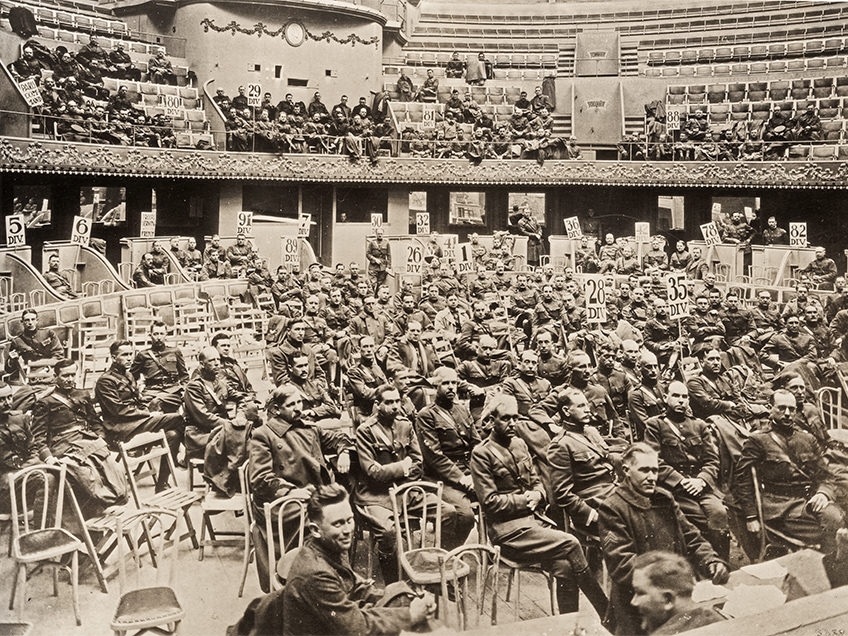
The American Legion forms in Paris, France, at the American Officers Club (March 15) and Cirque de Paris (March 17). Organizers, who expect about 300, are surprised when hundreds more pour in. Officially, 463 register for the caucus, but more than 1,000 are believed to have attended.
“Though some later remembered having signed attendance slips at the caucus, Pvt. George W. Munroe later said he ‘saw no evidence of registration at the caucus. As far as I could see, anybody who happened to wander in could sit down and take part. It was somewhat of a madhouse. When I reported to the Cirque de Paris, I presented my travel orders to the soldier on duty at the door, and he looked me over, handed them back, and directed me to the section reserved for the 1st Division. After that, I came and went as I pleased.’”
The American Legion: An Official History, 1919-1989, Thomas Rumer
The March 15 opening session is scheduled to start at 10 a.m., but confusion reigns, and it does not begin until 2:55 p.m. Lt. Col. Eric Fisher Wood presides. Among the recorded attendees are Pvt. Harold Ross, who goes on to become editor of The American Legion Magazine and, following that, founder of The New Yorker magazine; future Secretary of the Treasury Capt. Ogden Mills; and future father of American military intelligence, Lt. Col. William “Wild Bill” Donovan. The first four 15-member committees of The American Legion are: Convention, Permanent Organization, Constitution and Name.
The committee tasked with naming the new organization reports 12 nominations:
- Comrades of the Great War
- Veterans of the Great War
- Liberty League
- Army of the Great War
- Legion of the Great War
- Great War Legion
- The Legion
- The American Legion
- American Comrades of the Great War
- Society of the Great War
- The Great Legion
- American Comrades
At the second meeting of the caucus, on March 17, Lt. Col. Thomas W. Miller of Delaware, a former member of Congress who enlisted as an infantryman in the Army after an unsuccessful re-election campaign, brings the final session to order. Without a gavel to start the meeting, he pulls from his pocket an 1873 silver dollar, which he always carries with him, and raps it on a table.
The day’s business includes choosing the organization’s name, membership eligibility criteria and the preliminary drafting of a preamble to The American Legion Constitution. (Miller would later serve as a national Legislative Committee co-chairman, would co-author the organization’s federal charter, serve on the National Executive Committee both for Delaware and Nevada, and in 1968 would be elected Past National Commander by a vote of the 50th American Legion National Convention in New Orleans.)
After much debate, in a motion reportedly accelerated by hunger just before lunchtime, “American Legion” is chosen and adopted as a temporary name for the association. Following the final afternoon’s business, the first American Legion executive committee meeting is called to order, with Milton Foreman of Chicago as chairman.
“They were to promote an organization which would not take form until the following November. They had no funds whatever, no offices, no staff, no literature. They had been named the temporary executives of a great idea.”
“A History of The American Legion,” Richard Seelye Jones, 1946
